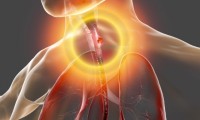-
Bluebird signs major coverage deal for sickle cell gene therapy Lyfgenia, easing some price concerns
- Source: drugdu
- 277
- December 17, 2023
-
MHRA supports launch of Innovate UK’s first-of-its-kind initiative to fund new Regulatory Science and Innovation Networks
- Source: drugdu
- 254
- December 16, 2023
-
Federal Court Enters Consent Decree Against Pharmasol for Distributing Adulterated Drugs
- Source: drugdu
- 263
- December 16, 2023
-
St. Jude decks out more celebs in t-shirts for seasonal donation drive
- Source: drugdu
- 256
- December 16, 2023
-
US WorldMeds’ Iwilfin bags FDA nod as 1st oral maintenance treatment for high-risk neuroblastoma
- Source: drugdu
- 324
- December 16, 2023
-
Study Highlights Need for Pharma Industry to Address Stigmatization of Acne
- Source: drugdu
- 291
- December 16, 2023
-
Atropos Health, Seqster Team Up to Reduce Disparities in Clinical Trials
- Source: drugdu
- 271
- December 16, 2023
-
Next-Gen Esophageal DNA Test Offers Enhanced Assay Performance and Lower Costs
- Source: drugdu
- 237
- December 16, 2023
-
Blood Tests Used to Hunt for Cancer DNA May Help Detect Cancers Faster
- Source: drugdu
- 372
- December 16, 2023
-
Nuzyra ® has been on the market for two years and both dosage forms have been included in medical insurance
- Source: drugdu
- 236
- December 16, 2023
your submission has already been received.
OK
Subscribe
Please enter a valid Email address!
Submit
The most relevant industry news & insight will be sent to you every two weeks.













